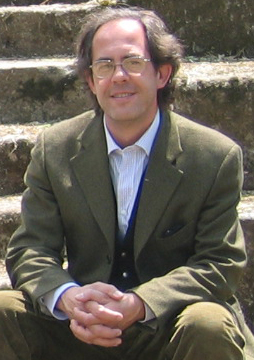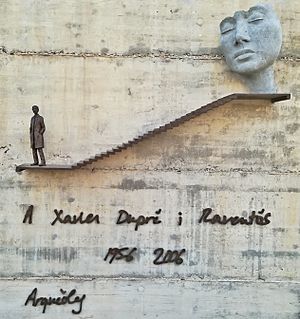Xavier Dupré i Raventós facts for kids
Xavier Dupré i Raventós (born July 1, 1956, in Barcelona; died April 20, 2006, in Rome) was a Spanish archaeologist and historian. He studied ancient times, especially the Roman period. He was the first archaeologist chosen by the government of Generalitat de Catalunya to work in Tarragona. Xavier also led the Taller–Escola d’Arqueologia de Tarragona (TED’A), a special school for archaeology. He directed excavations at the Roman city of Tusculum in Italy and was a deputy director at the Spanish School of History and Archaeology in Rome.
Contents
Becoming an Archaeologist
Early Discoveries
Xavier Dupré loved archaeology from a young age. While still in high school in Barcelona, he helped with archaeological digs at Empúries. This was a very old Greek and Roman city in Spain. He then went to the University of Barcelona and finished his studies in 1979. He learned about prehistory, ancient history, and archaeology.
In 1980, Xavier received a special grant. This allowed him to study at the Sapienza University in Italy. This experience connected him with the Spanish School of History and Archaeology in Rome (EEHAR). He would later become a leader there. During this time, he worked on excavations in Gabii, an ancient city near Rome. In 1981, he wrote his main university paper about the clay decorations from the temple of Juno in Gabii.
Working in Tarragona
In late 1981, Xavier moved to Tarragona. He got a job as the provincial archaeologist for the Catalan government. Once there, he started many projects to research and restore ancient Roman sites. He worked on the Roman circus and the provincial forum of Tarraco. Tarraco was the old Roman capital of the Tarraconensis province.
In December 1986, Xavier became the director of the Taller-Escola d'Arqueologia (TED’A). This school was run by the Tarragona city council. TED'A was a special program to train people in archaeology. It helped them get jobs. From 1986 to 1990, TED'A made Tarragona's Roman heritage famous. It became a top place for urban archaeology in Spain.
The school had three main goals. First, it trained people in Tarragona's ancient heritage. It gave them knowledge and practice to find work. Second, it excavated and studied parts of the Roman circus and the amphitheatre. This was to help preserve and restore them. Third, the school wanted to connect local people with archaeology. It made ancient sites easier for everyone to understand. The books and reports published by TED'A were excellent examples for archaeology in Spain.
Life and Work in Rome
After TED’A closed in 1990, Xavier moved to Rome. He received a scholarship from EEHAR to continue his studies. He kept researching Tarragona's Roman heritage. He helped organize a big international archaeology conference in Tarragona in 1993. In 1992, he finished his PhD thesis about the Berà Roman arch. This work won him a special prize. After publishing his thesis, he stayed at EEHAR. In 1994, he became a head scientist. The next year, he was chosen as the deputy director of EEHAR. He held this important position until he passed away in 2006.
His main work in Rome focused on the ancient city of Tusculum in Italy. He led many excavation projects there. They dug up parts of the theatre, the forum, and the city walls. The Tusculum project was a big team effort. It included several universities and archaeological groups from Italy and Spain. It became a place where scientists from both countries shared ideas. Xavier believed it was important to share what they found. From 1994, he published reports on the work done each year. He also wrote a book about Tusculum. He shared his research at many international meetings. His archaeological work ended in 2006 when he died in Rome after a long illness.
Remembering Xavier Dupré
Xavier Dupré's death in 2006 was a shock to the archaeology world. He was part of many important groups. These included the International Committee on Archaeological Heritage Management of ICOMOS and the German Archaeological Institute. After he passed away, many people and groups honored him. There were tributes at the Institut d’Estudis Catalans and the CSIC. The International Association of Classical Archaeology held a conference in his honor in Rome.
On April 21, 2007, his ashes were scattered at the theatre of Tusculum. A local group put up a monument there to remember his work. The monument says, "To Xavier Dupré, archaeologist of Tusculum." In 2008, the Tarragona city council named a public space after him. In 2012, Tarragona gave him a special award called the Diploma al Mèrit Cultural. In 2016, Tarragona hosted a big international archaeology conference. In 2018, a sculpture by artist Beátrice Bizot was placed in the Tarraco Circus arena to honor his memory.
Images for kids
See also
 In Spanish: Xavier Dupré i Raventós para niños
In Spanish: Xavier Dupré i Raventós para niños




